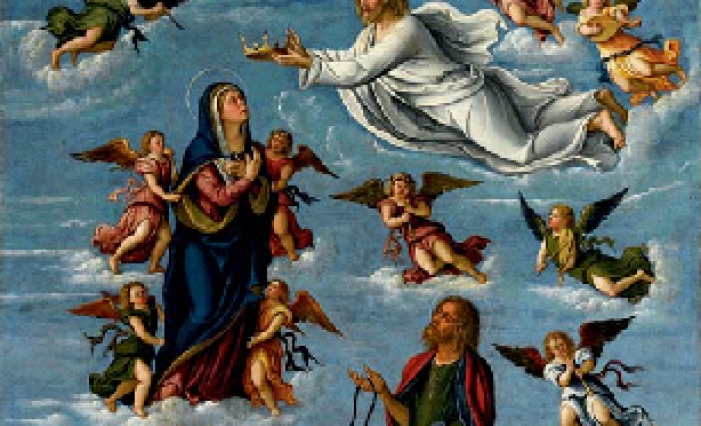Devotion to Maria Assunta: what Pius XII said about the dogma of the assumption
Holiness, splendor and glory: the body of the Virgin!
The holy fathers and the great doctors in the homilies and in the speeches, addressed to the people on the occasion of today's feast, spoke of the Assumption of the Mother of God as a doctrine already alive in the conscience of the faithful and already professed by them; they explained its meaning amply, clarified it and learned its content, showed its great theological reasons. They particularly pointed out that the object of the feast was not only the fact that the mortal remains of the Blessed Virgin Mary had been preserved from corruption, but also her triumph over death and her heavenly glorification, so that the Mother would copy the model, that is, imitate his only Son, Christ Jesus.
Saint John Damascene, who stands out among all as exemplary heads of this tradition, considering the bodily Assumption of the great Mother of God in the light of his other privileges, exclaims with vigorous eloquence: «She who in childbirth had kept her virginity unharmed must have also to preserve his body without corruption after death. She who carried the Creator as a child in her bosom was to dwell in the divine tabernacles. She, who was given in marriage by the Father, could only find a home in the heavenly seats. She had to contemplate her Son in glory to the right of the Father, she who had seen him on the cross, she who, preserved from pain when she gave birth to him, was pierced by the sword of pain when she saw him die. It was right that the Mother of God possessed what belongs to the Son, and that she was honored by all creatures as Mother and handmaid of God ».
St. Germano of Constantinople thought that the incorruption and assumption of the body of the Virgin Mother of God not only suited her divine motherhood, but also the special holiness of her virginal body: "You, as it was written, are all splendor (cf. Ps 44, 14); and your virginal body is all holy, all chaste, all the temple of God. For this reason it could not know the decay of the sepulcher, but, while preserving its natural features, it had to transfigure itself in the light of incorruptibility, to enter into a new and glorious existence , enjoy full liberation and perfect life ».
Another ancient writer affirms: «Christ, our savior and God, donor of life and immortality, it was he who gave life back to the Mother. It was he who made her, who had generated him, equal to himself in the incorruptibility of the body, and forever. It was he who raised her from the dead and welcomed her beside him, through a path that is known only to him ».
All these considerations and motivations of the holy fathers, as well as those of theologians on the same theme, have Sacred Scripture as their last foundation. Indeed, the Bible presents us with the holy Mother of God closely united to her divine Son and always in solidarity with him, and sharing in his condition.
As for Tradition, then, it should not be forgotten that since the second century the Virgin Mary was presented by the holy fathers as the new Eve, intimately united with the new Adam, although subject to him. Mother and Son always appear associated in the fight against the infernal enemy; a struggle which, as had been foretold in the proto-Gospel (cf. Gn 3:15), would have ended with the most complete victory over sin and death, over those enemies, that is, that the Apostle of the Gentiles always presents in common (cf. Rom ch. 5 and 6; 1 Cor 15, 21-26; 54-57). As therefore the glorious resurrection of Christ was an essential part and the final sign of this victory, so also for Mary the common struggle had to end with the glorification of her virginal body, according to the affirmations of the Apostle: «When this corruptible body will be dressed in incorruptibility and this mortal body of immortality, the word of Scripture will be fulfilled: Death has been swallowed up for victory "(1 Cor 15; 54; cf. Hos 13: 14).
In this way the august Mother of God, arcanely united to Jesus Christ from all eternity "with the same decree" of predestination, immaculate in its conception, virgin illibated in her divine motherhood, generous companion of the divine Redeemer, victorious over sin and death, in the end he got to crown his greatness, overcoming the corruption of the sepulcher. She overcame death, as did her Son, and was raised in body and soul to the glory of heaven, where Queen shines at the right hand of her Son, immortal King of centuries.
